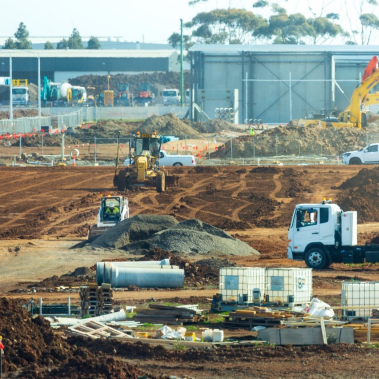COVID-19 has shined a bright light on our society’s resilience and know-how but also highlighted cracks in what we collectively held as truths over decades—including the infallibility of our construction models.
The environmental, social, and governance (ESG) movement, already gaining considerable traction in recent years, has been propelled to the top of corporate and legislative agendas in the wake of the COVID-19 crisis. This comes just as major economies are increasingly counting on the construction industry to lead the global economic recovery.
Internal business practices have to change significantly if companies are to meet rising expectations around ESG performance. This will in turn necessitate a proactive review of contractual undertakings, the cost structure of projects, and emerging drivers of litigation. It used to be that claims were typically triggered under the following headings: 1) design errors, 2) construction defects, 3) cost overruns, 4) schedule delays, 5) product failure, and 6) unrelated third-party actions. However, the pressure of ESG requirements, coupled with the accelerating impacts of climate change, will seriously test contractors, subcontractors, and design teams. Consequently, new litigious issues may emerge under the following headings:
ESG standards: Under binding contractual agreements, construction industry actors will be required to follow newly established guidelines and criteria associated with sustainable building. Shortcomings in this broadly defined obligation can seriously undermine the financing strategies of owners and developers and affect their reputation among stakeholders. Moreover, the precise requirements are fluid and will invariably change from project to project. Such ambiguity may ultimately lead to more claims for non-compliance with contract undertakings, often for important amounts. The greater risk of litigation in turn means that developers will need to properly document decisions and procedures and engage experts to help properly define liabilities as well as gauge the costs associated with due compliance.
Materials: The construction and building industries emit a substantial amount of the world’s carbon emissions, primarily from the materials used and the construction process. Concrete, steel, and insulation material, for example, are unsustainable resources that are particularly difficult to reuse. Alternative materials are being developed, but progress will be slow and costly. In the meantime, the use of building information modeling technology and prefabrication methods is helping to reduce waste in the industry. That said, supply chain issues—including due to geopolitical turmoil and inflationary pressures—will inevitably exert tremendous pressures on contractual arrangements. This could, if not managed from the outset, severely impact a project’s completion timescale.
Digitalization: Digital tools and complex modelling can be used to optimize a structure’s performance and provide owners and developers with a clearer basis for managing its lifecycle performance. However, while this is the goal, the reality is that the construction industry is under-digitized. It is starting to catch up with current trends, but the significant costs associated with system upgrades and procedural change mean that a step process is required. This often means that companies in the midst of their digital transformation may be especially exposed to cyber risk: Project disruptions or even cessations are becoming noticeably more frequent, as are breaches of confidential or proprietary information managed by contractors and designers. Such incidents can render projects liable to delay claims as well as claims for damages associated with leaked data.
Climate as an external factor: It used to be that death and taxes were the two absolute certainties in the human realm. To this, one must now add climate change. It will be more important than ever for the construction industry to consider their climate risk exposures in relation to the use of materials, the method and manner of construction, and the site of works. Construction companies will have to consider whether their contractual arrangements are client resilient and their obligations achievable and deliverable—over the life of the project as well as after completion and handover. This is especially so given that extreme weather events may lead to delays, costs, and, potentially, force majeure events that will affect timelines and compel teams to redesign certain aspects of the project at short notice.
Design: The reality and exigency of climate change is unsettling for those who design our future cities and the accompanying infrastructure. What are the standards to which we must now build? How will these be reflected in contractual arrangements and will professionals be in a position to deliver, even with the proper expertise and skill? What is the standard of care? A few examples will suffice to highlight the complexity of the issues at hand:
- Electrical systems (e.g., heating, ventilation, and air conditioning) and their underlying infrastructure grids are under pressure due to the significant fluctuations in temperature precipitated by climate change; what must be done to ensure they remain resilient?
- Transportation infrastructure is facing greater heat stress: rail transit is subject to “sun kinks” (imperfections in steel caused by heating and expansion), roads become softened and rutted, bridges experience cracking and displacement; what needs to be done to create more sustainable reflective surfaces?
- Waste and water infrastructure are facing wider variations in supply and throughput; to what output standards must plants be designed?
- Energy infrastructure is more exposed than ever to fire hazards; what infrastructure protection measures must be embedded in designs?
- Infrastructure in Northern territories being affected by the deterioration of permafrost; how do we secure existing infrastructure exposed to these conditions?
- Biodiversity and related environmental concerns; what will be needed to comply with a plethora of guidelines, rules, and regulations?
Mitigation Strategies
High-level mitigation strategies should consider factoring in the following:
- Contractual arrangements must be reviewed in conjunction with all critical stakeholders to account for the risk drivers highlighted below:
- Health and safety: Working conditions and stoppages will need to be reassessed to determine acceptable costs.
- Timelines/Milestones: These will need to be adjusted to account for emerging challenges and unforeseen changes.
- Pricing: Models will need to include contingencies that encompass a wide range of potential disruptions, including any rearrangements in fixed-price agreements.
- The notion of force majeure will have to be redefined to incorporate clear definitions of relief; what constitutes force majeure will depend on a number of factors, particularly how it is contractually defined.
- Inflation will need to be addressed as it will continue to be a major factor in the design of future contracts.
- Teaming and supply chain arrangements will need to be adjusted to take into account strong headwinds in regard to workforce availability, the depth and breadth of accessible expertise, and the resilience of supply chain pipelines. They should include protections for the livelihoods of the small subcontractors and subconsultants that are the backbone of the industry.
- The industry must contribute to shaping measured legislative guardrails and guidelines that can adequately assist stakeholders in adjusting the ways in which they build future-ready infrastructure.
In light of the above, procurement and project managers must work with legal resources, insurers, and risk managers from the outset to identify the risk drivers that may impede the success of a project. It is also of paramount importance that alternative methods of dispute resolution (e.g., negotiation, mediation, and arbitration) be embedded in the project to enable teams to address issues as they come up and collaborate effectively. This will help protect the project from interruptions and impediments as well as speed up resolution processes, which can reduce representation costs.
It is inevitable that the industry will undergo a dramatic transformation in the coming years, but the concern is, as always, at what cost? Only organizations that proactively and effectively adapt to the rising expectations associated with the transition will have a chance to weather the storm to come.



